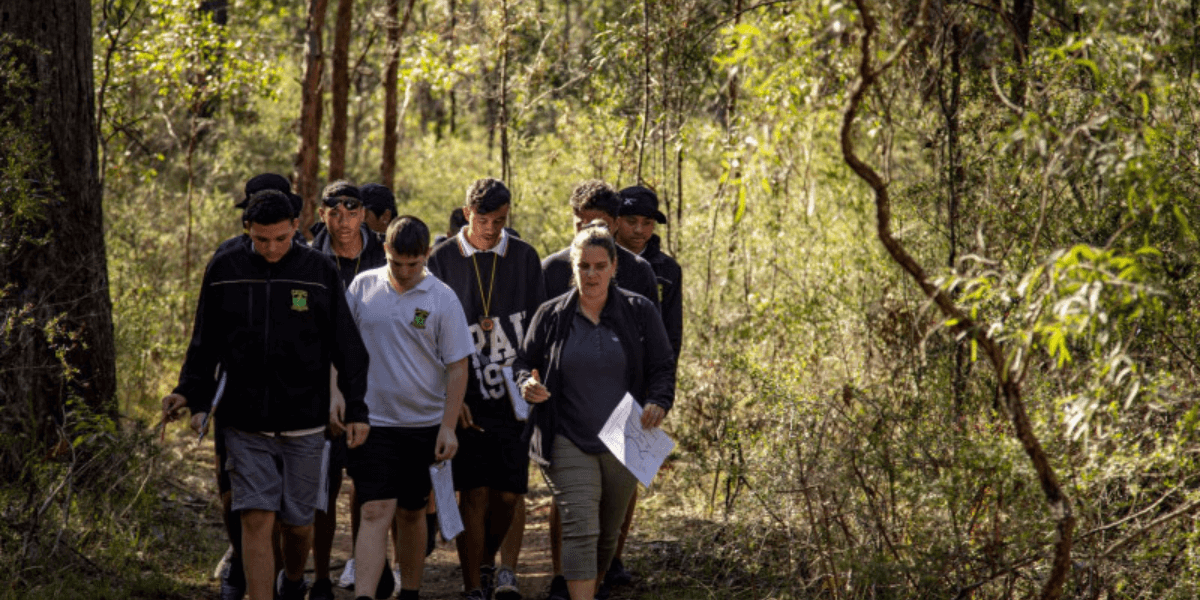Guardians of the Park builds students’ self-esteem and purpose by reconnecting them with nature in Western Sydney Parklands.
Led by an experienced team of Greater Sydney Parklands education staff, teens learn hands-on land management practices including Indigenous land management techniques and bush survival skills. They also develop an appreciation for and connection with the parklands.
The program aims to restore 3,000 m2 of bushland and plant 4,620 native trees over 3 years.
Benefits for students
Guardians of the Park helps students understand how vandalism can affect the parklands. They learn about the precious bushland within the parklands, the animals who call it home, and the community who live in surrounding areas.
We conducted a pilot program with local school students in 2022. By the end, students reported feeling pride in their work, increased happiness and self-satisfaction and better self-esteem.
Benefits for the parklands
Benefits for the parklands
Western Sydney Parklands faces environmental challenges such as loss of the critically endangered Cumberland Plain Woodland. Human activity, the breaking up of habitat, the urban heat island effect and climate change all endanger the woodland. Arson and plant destruction also threaten this environment.
By restoring, reconnecting, and monitoring threatened habitat, we can make Western Sydney Parklands more resistant to climate change and help disengaged teens feel a sense of belonging to their local green space. We also hope there will be fewer deliberately lit fires and instances of anti-social behaviour in the parklands.
New schools joining the program
To find out more about the program, check out the FAQ below and get in touch with us by emailing: [email protected].
Costs and transport
The program is free, excluding transport to Western Sydney Parklands. Schools must provide transport to the site. However, there are opportunities for our organisation to source funding for student transport for schools with special circumstances that commit to the program for at least 2 terms.
School responsibilities
School teachers have duty of care and must supervise and support students for the whole session.
More opportunities for students
Each student who completes the program will receive a certificate of attainment listing the skills they have learned and practised. This can be useful for students who want to pursue a career in horticulture or conservation and land management.
Frequently asked questions
The program is free, excluding transport to Western Sydney Parklands. Schools must provide transport to the site. However, there are opportunities for our organisation to source funding for student transport for schools with special circumstances that commit to the program for at least 2 terms.
Secondary School aged pupils. This program was designed for students who would benefit from outdoor learning, particularly those experiencing multiple challenges.
The program is lead by Greater Sydney Parkland’s expert education rangers. Each term includes additional supported sessions with Aboriginal educators.
- Wildlife tracking and surveying; species identification and ecology
- Land management (vegetation control, tree-felling and tree-planting and using relevant tools and PPE)
- Bushcraft and survival skills
- Indigenous cultural knowledge and skills from Aboriginal educator
- Personal growth
- Increased physical, social, and emotional wellbeing through nature connection
- Fostering a sense of identity and belonging
- Learning essential life skills that benefit the environment, community and individual participants
- Ecological Learning
Our optimal group size is 10 students who attend the entire term together.
For schools new to the program, the first 2 sessions are held as incursions so the pupils can get to know the educators and sample program content.
School teachers have duty of care and must supervise and support students for the whole session.
Contact us
Terms 1 and 2 in 2025 are fully booked.
If your school is interested in future dates, please email [email protected].
